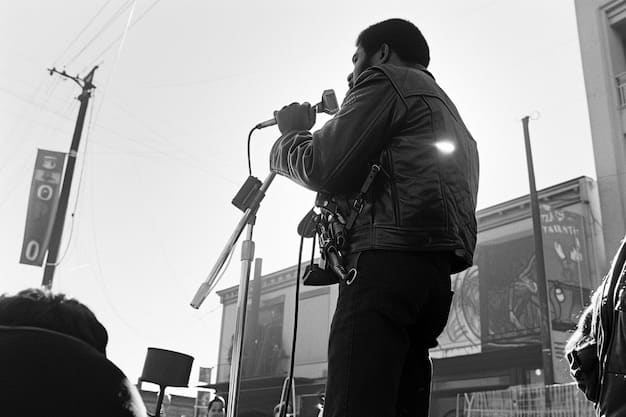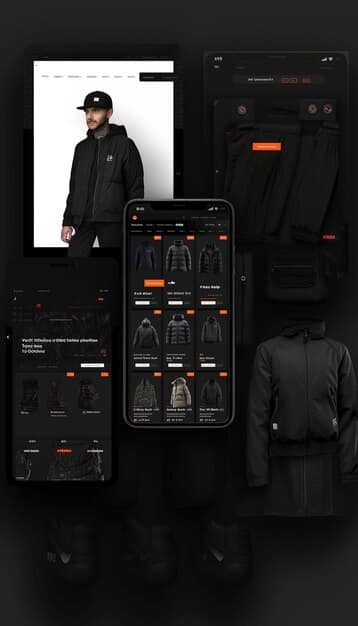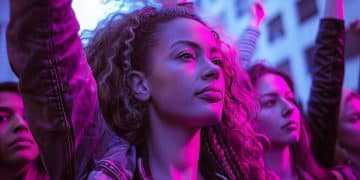Rappers Building Million-Dollar Merchandise Empires

Rappers are strategically leveraging merchandise to build multi-million dollar businesses, transitioning from music artists to formidable entrepreneurs by monetizing their personal brands and expanding their economic influence beyond traditional record sales.
In an era where music consumption habits are constantly evolving, artists are compelled to innovate their revenue streams. For the hip-hop community, this imperative has spurred a remarkable entrepreneurial shift, demonstrating Beyond the Mic: How Rappers Are Building $1 Million+ Businesses Through Merchandise. The narrative of success in hip-hop now extends far beyond chart-topping hits, embracing a sophisticated understanding of brand extension and direct-to-consumer engagement.
The Evolution of Hip-Hop Branding: From Mixtapes to Merch Empires
The journey from humble beginnings to global phenomenon for many rappers has been deeply intertwined with their ability to cultivate a potent brand. Early on, this meant lyrical prowess, unique flow, and a compelling personal story. Today, it has expanded to encompass sophisticated business ventures, with merchandise standing out as a cornerstone of this financial diversification.
The transition from simply selling concert tees to designing full-fledged fashion lines reflects a matured understanding of consumer psychology and market demand. It’s not just about slapping a logo on a shirt; it’s about translating an artist’s entire ethos, aesthetic, and cultural impact into tangible products that resonate deeply with their fanbase.
The Power of Authenticity in Merchandise
What sets hip-hop merchandise apart is its inherent connection to authenticity. Fans don’t just buy a product; they buy into a lifestyle, a statement, and a piece of their idol’s identity. This deep emotional resonance transforms a simple piece of clothing or accessory into a powerful identifier of belonging and allegiance.
- Storytelling Through Apparel: Each collection often tells a story, referencing album themes, tour narratives, or personal milestones.
- Community Building: Wearing an artist’s merch is a visual declaration of fandom, fostering a sense of community among supporters.
- Cultural Resonance: Merchandise frequently incorporates elements of street culture, urban fashion, and social commentary, making it more than just clothing.
This authenticity is hard to replicate and provides a competitive edge in a crowded market. It allows rappers to command premium prices and foster loyalty that transcends seasonal trends, creating a sustainable business model long after the music has been consumed.
The entrepreneurial spirit within hip-hop has always been present, but the strategic embrace of merchandise has elevated it to new heights. It signifies a shift from passive income to active business development, where artists are not just entertainers but visionary founders shaping their economic destinies.

Strategic Business Models: Beyond the Tour Bus
The traditional model of relying solely on album sales and touring revenues has proven increasingly precarious in the digital age. Smart rappers have recognized this shift and pivoted towards robust, diversified business models, with merchandise at the forefront. Their strategies often involve direct-to-consumer (D2C) approaches, limited edition drops, and collaborations that amplify their reach and exclusivity.
This strategic shift involves not just designing products, but also understanding supply chain management, e-commerce platforms, marketing funnels, and customer relationship management. It’s the sophisticated operation of a modern apparel or lifestyle brand, scaled by the artist’s existing influence.
Limited Edition Drops and Scarcity Marketing
One of the most effective strategies employed by rappers in their merchandise ventures is the use of limited edition drops. This creates hype, urgency, and perceived value, leading to immediate sell-outs and significant revenue generation in short periods.
- Building Hype: Announcements of exclusive drops create anticipation among fanbases, often leading to viral social media engagement.
- Instant Sell-Outs: The scarcity model encourages immediate purchases, preventing inventory build-up and maximizing initial profits.
- Resale Market Value: Exclusive items often gain value in the secondary market, further enhancing the brand’s desirability and prestige.
This approach transforms merchandise from a mere souvenir into a coveted item, akin to a collectible. It also allows artists to test market demand for new products without overcommitting resources. It’s a testament to their understanding of modern consumer behavior and digital marketing tactics.
Furthermore, many rappers are not just licensing their names; they are actively involved in the design, production, and marketing processes, ensuring quality and alignment with their artistic vision. This hands-on approach builds integrity and trust with their audience, crucial for long-term brand success.
Key Players and Their Million-Dollar Merch Success Stories
The landscape of hip-hop merchandise is dotted with numerous success stories, illustrating the immense potential of this revenue stream. Artists like Travis Scott, Kanye West, Drake, and Cardi B stand out as pioneers who have seamlessly merged their music careers with thriving merchandise empires, each approaching the market with unique strategies.
These artists do not merely rely on their celebrity; they invest heavily in product quality, unique designs, and sophisticated marketing campaigns that transcend traditional music promotion. Their merchandise often becomes a cultural phenomenon in its own right, separate from, yet deeply connected to, their musical output.
Travis Scott and Astroworld Merchandise
Travis Scott’s Astroworld merchandise is a prime example of how concert merch can evolve into a full-fledged fashion line. His releases, often coinciding with album drops or tour dates, are notorious for selling out within minutes, generating millions in revenue. The unique, psychedelic aesthetic aligned perfectly with his musical brand, creating a distinct visual identity that fans eagerly adopted.
- Concert-Driven Release: Initial drops often tied directly to concert experiences, enhancing exclusivity.
- Varied Product Range: From t-shirts and hoodies to highly sought-after action figures and collectible items.
- High Resale Value: The scarcity and demand for Astroworld merch have led to significant markups in the secondary market.
His strategy demonstrates a masterful blend of music, fashion, and event marketing, creating a holistic brand experience that keeps fans engaged and willing to spend.
Kanye West, through his Yeezy brand, has arguably redefined how artists approach fashion and lifestyle, albeit in a different sphere. While not strictly “merchandise” in the traditional sense, Yeezy’s success showcases the power of an artist’s personal brand to drive massive commercial success in apparel and footwear. Drake’s OVO (October’s Very Own) label, encompassing music, events, and a significant apparel line, further cements this trend. These examples collectively illustrate a roadmap for aspiring artists looking to diversify their income streams. Each success story is a testament to the power of vision, strategic execution, and an undeniable connection with the fanbase.
Creative Design and Production: Crafting Desirable Products
Simply having a popular name isn’t enough to guarantee merchandise sales. The true art lies in the creative design and production of products that are not only desirable but also represent the artist’s brand authentically. This involves a deep dive into aesthetic choices, material quality, and the overall narrative conveyed through each piece.
Rappers are increasingly collaborating with established fashion designers, leveraging their expertise to create lines that meet high industry standards. This partnership elevates the perceived value and quality of the merchandise, moving it beyond mere fan apparel into the realm of legitimate fashion.
The Role of Aesthetics and Quality
The visual appeal and tactile quality of merchandise play a crucial role in its success. Fans expect more than just a band logo; they seek well-designed, comfortable, and durable items that they can proudly wear or display. This attention to detail reflects on the artist’s overall professionalism and brand integrity.
- Unique Graphics: Incorporating album art, iconic lyrics, or distinct visual motifs that resonate with the artist’s legacy.
- Premium Materials: Using high-quality fabrics and sustainable production methods where possible, enhancing comfort and longevity.
- Attention to Detail: Including custom tags, intricate embroidery, or unique packaging that elevate the unboxing experience.
This meticulous approach differentiates their offerings from generic fan merchandise and allows them to compete effectively in the broader fashion market. It’s about building a brand that can stand on its own, beyond the music.
Furthermore, many artists are now exploring licensing opportunities, allowing their brand to extend into various product categories, from lifestyle goods to home decor. This expansion further solidifies their entrepreneurial footprint and taps into wider consumer bases. The success of these ventures underscores the importance of a well-thought-out creative strategy and a commitment to quality in the competitive world of merchandise.
Marketing and Distribution: Reaching the Global Fanbase
Even the most brilliantly designed merchandise won’t sell itself. Effective marketing and robust distribution channels are paramount to converting creative vision into tangible revenue. Rappers and their teams have embraced diverse digital marketing strategies and sophisticated e-commerce solutions to reach their global fanbases, bypassing traditional retail gatekeepers.
This includes leveraging social media influence, building dedicated e-commerce platforms, and orchestrating targeted advertising campaigns that create demand and drive traffic to their online stores. The goal is to make the purchasing process as seamless as possible, from discovery to delivery.
Leveraging Social Media for Hype and Sales
Social media platforms are the primary battleground for merchandise marketing. Artists use platforms like Instagram, Twitter, and TikTok to not only announce new drops but also to showcase the products through engaging content, behind-the-scenes glimpses, and aspirational lifestyle imagery.
- Direct Engagement: Interacting with fans in comments and DMs to build excitement and address queries.
- Influencer Marketing (Self-Influencing): The artists themselves act as the ultimate influencers, wearing and promoting their own products.
- Interactive Content: Polls, countdowns, and live streams that integrate product reveals keep fans invested and eager to purchase.
This direct access to millions of followers allows for highly targeted and cost-effective marketing, generating immediate buzz and prompting impulsive purchases. It’s a powerful feedback loop that informs future design and marketing strategies.
Beyond social media, establishing a dedicated, robust e-commerce presence is critical. Platforms like Shopify or custom-built solutions allow artists full control over their inventory, pricing, and customer data. Many also invest in sophisticated fulfillment and shipping logistics to ensure a smooth global distribution, reinforcing brand trust and customer satisfaction. The seamless integration of marketing and distribution pipelines is what ultimately propels these merchandise ventures into multi-million dollar businesses, extending their artistic reach into profound economic influence.
Challenges and Future Trends in Hip-Hop Merch
While the merchandise market offers immense opportunities for rappers, it’s not without its challenges. Competition is fierce, production costs can be high, and the need to constantly innovate to stay relevant is taxing. Furthermore, intellectual property rights, counterfeiting, and supply chain ethics are growing concerns that artists and their teams must navigate carefully.
Looking ahead, the future of hip-hop merchandise is likely to embrace even more advanced technologies and sustainable practices, continuously pushing the boundaries of what’s possible in fan engagement and commercial ventures.
Navigating Competition and Counterfeiting
The success of hip-hop merchandise has naturally attracted a multitude of players, from other artists to independent designers, intensifying competition. Moreover, the prevalence of counterfeit products poses a significant threat, eroding revenue and diluting brand integrity.
- Brand Protection: Implementing robust legal measures to combat unauthorized replication of designs and logos.
- Unique Drops: Consistently offering innovative and highly exclusive items that are harder for counterfeiters to replicate quickly.
- Direct-to-Consumer Focus: Encouraging purchases exclusively through official channels to ensure authenticity and quality.
Addressing these challenges requires a multi-pronged approach, combining legal action with superior product innovation and transparent communication with the fanbase.

Emerging Trends: Sustainability, NFTs, and AI in Design
The future of hip-hop merchandise is likely to be shaped by several key trends. Sustainability in production and materials is gaining traction, with artists recognizing their environmental responsibility. The integration of NFTs (Non-Fungible Tokens) into merchandise offerings, perhaps connecting a physical item to a digital collectible, presents new avenues for exclusivity and fan engagement.
Furthermore, AI and generative design tools could revolutionize how merchandise is concepted and produced, allowing for hyper-customization and rapid response to trend cycles. These innovations promise to make the business even more dynamic and profitable, pushing rappers further into the realms of tech entrepreneurship.
| Key Aspect | Brief Description |
|---|---|
| ⭐ Brand Extension | Rappers leverage their personal brand and artistic vision beyond music into tangible products. |
| 🚀 Strategic Business | Incorporates D2C, limited drops, and collaborations for higher revenue and market control. |
| 🎨 Creative Design | Focus on unique aesthetics, high-quality materials, and compelling narratives behind products. |
| 📈 Market Domination | Strong marketing via social media and robust e-commerce platforms to reach global fans. |
Frequently Asked Questions
▼
Merchandise offers rappers a direct, high-margin revenue stream that diversifies income beyond music sales and touring. It enables direct fan engagement, builds a stronger brand identity, and provides tangible products that fans can connect with, fostering loyalty and community in an evolving music landscape.
▼
Common merchandise includes apparel like t-shirts, hoodies, and hats, often featuring album art or distinctive logos. Many expand into more exclusive items like custom sneakers, limited edition collectibles, lifestyle accessories, and even broader fashion lines that reflect their personal style and brand ethos.
▼
Authenticity is maintained by active involvement in design and production, often collaborating with established fashion designers. Quality is ensured by selecting premium materials, employing ethical manufacturing, and overseeing production closely. This commitment builds trust with fans and elevates the brand’s standing in the market.
▼
Social media is pivotal for marketing and sales. Rappers use platforms to announce drops, showcase products through engaging content, and interact directly with fans. This generates immense hype, creates urgency for limited editions, and drives traffic directly to their e-commerce sites, enabling global reach and instant sales.
▼
Yes, future trends include a stronger push towards sustainability in production, integration of NFTs for exclusive physical and digital collectibles, and leveraging AI for innovative design processes. These advancements are aimed at increasing efficiency, enhancing fan engagement, and opening new revenue streams in the constantly evolving market.
Conclusion
The journey of rappers from solely musical artists to formidable business moguls, particularly through their merchandise ventures, underscores a significant evolution within the entertainment industry. It highlights a profound understanding of brand power, direct-to-consumer strategies, and the monetization of cultural influence. By consistently delivering high-quality, authentic products that resonate deeply with their passionate fanbases, these artists are not just selling apparel; they are building robust, multi-million dollar enterprises that solidify their entrepreneurial legacy well Beyond the Mic: How Rappers Are Building $1 Million+ Businesses Through Merchandise. This strategic pivot ensures their continued relevance and financial independence in an ever-changing media landscape.





